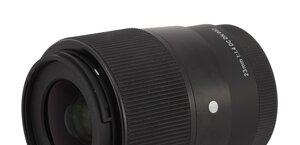Viltrox AF 27 mm f/1.2
10. Autofocus
Autofocus
The autofocus of the tested Viltrox joined with the Fujifilm X-T2 is noiseless and, in most cases, very quick. Usually running through the whole distance range and confirming the focus takes about 0.5 of a second, a pretty good fastness in our opinion. When you take photos in weaker lighting conditions and against less contrasted background the autofocus can waver and oscillate, extending the working time to even about 1 second.Overall the focusing mechanism doesn't cause any problems with accuracy. Both during the performance in the studio nad outside about 95% of all shots were successful. Taking into account the shallow depth of field that stems from the offered parameters it is a fully acceptable result.
The autofocus of the tested lens showed a very slight tendency for front focus and a shot below shows it very well. Still this effect was significant only and solely by f/1.2 and at the minimum focusing distance. In case of our testing charts positioned further away the problem became insignificant – we didn't notice any significant differences between resolutions we got in autofocus photos and photos where the sharpness was set manually.
Please Support UsIf you enjoy our reviews and articles, and you want us to continue our work please, support our website by donating through PayPal. The funds are going to be used for paying our editorial team, renting servers, and equipping our testing studio; only that way we will be able to continue providing you interesting content for free. |
- - - - - - - - - - - - - - - - - - - - - - - - - - - - - - - - - - - - - - - - - - - - - - - -
| Fujifilm X-T2, f/1.2 |
 |
Focus breathing
Focus breathing tests show refraiming images as you oversharp them. We conduct such a test by passing manually from the minimum focusing distance to infinity with the aperture stopped down; then we check how the field of view of the lens changed as a result.A frame change ranging from 0 to 5% we consider to be low. Between 5 and 10% you can speak about medium levels. Usually such values constitute also the maximum efficiency level of any breathing compensation algorithms, present in some bodies. Between 10 and 15% focus breathing is high, above 15% its level can be called very high.
The test video of the Viltrox lens is presented below:






